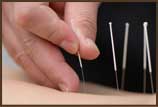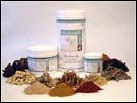Copyright 2009 Acupuncture Healing Center of Arizona
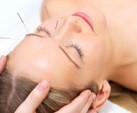
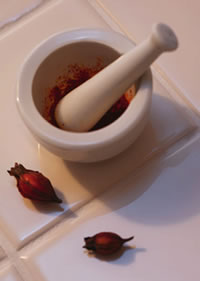
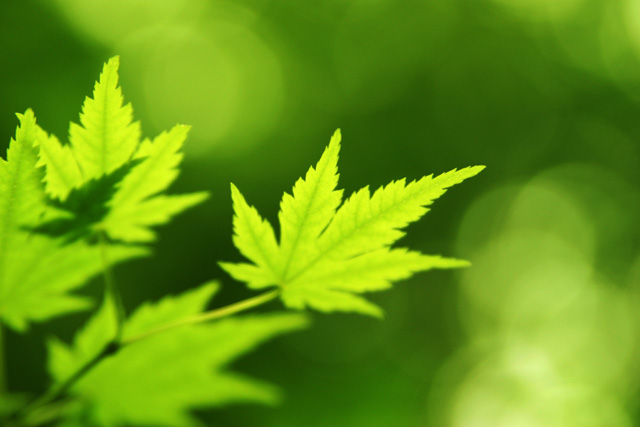
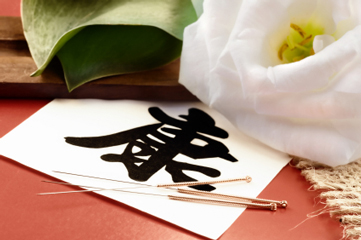
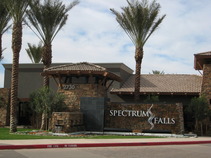
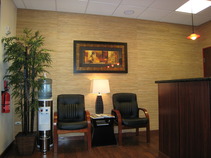
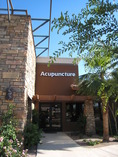
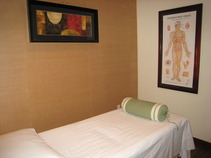
Healing through balance through acupuncture
entrance of medical plaza
waiting area
Clinic room
Office entrance
Frequent Asked Questions
What is Acupuncture?
Practiced for over 2,500 years in China, where it originated, acupuncture is part of the holistic system of Traditional Chinese Medicine (TCM), which views health as a constantly changing flow of energy, or qi (pronounced "chee"). According to ancient theory, imbalances in this natural flow of energy cause illness. Acupuncture needles are inserted into specific points on the body to restore the healthy flow of qi in the body, and also to prevent disease by maintaining it. While acupuncture has been practiced for centuries in the East, it wasn't until 1971 that U.S. citizens really became aware of the technique. It was then that New York Times reporter James Reston, stricken with appendicitis while in Beijing, was treated successfully with acupuncture for post-surgical pain. In a front page Times story, Reston wrote, "I've seen the past, and it works!"
This exposure came at a time when many Americans were looking for a more holistic approach to health care, and it caused quite a buzz in the Western medical community. Since then acupuncture has become a widely accepted form of treatment in the U.S.
How Does Acupuncture Work?
According to the principles of TCM, qi flows through the body via 12 primary meridians or "energy channels'. Each meridian is associated with an organ or organ system in the body, and along these meridians, there are exact points where the energy of that organ can be accessed and manipulated with acupuncture needles.
If you are suffering from nausea, for example, needles might be inserted into points on your wrist, while a vision problem might be treated with needles in the foot. Why? Because in addition to the surface acupuncture points which may be seen on an acupuncture point map, the meridians also have internal pathways which connect to and communicate with other organs in the body. By manipulating the qi within the meridians, acupuncture helps smooth and regulate the flow of energy between the internal organs.
What Can You Expect?
After you have shared your health history and current concerns, the acupuncturist will look at your tongue, feel your pulse and make other observations. This information is used to formulate a diagnosis in the language of Traditional Oriental Medicine as well as to choose the most helpful combination of acupuncture points and to estimate how many treatments you will need. Once this is determined, you will lie comfortably on the treatment table while the needles are inserted.
Most people are not bothered by the needles and while there may be some initial discomfort on insertion, it is very brief. You may feel a small, quick rush of energy at the point which is a good sign. This sensation is called"Da Qi" (Daa-chee) and is an indication that the energy in that meridian is responding to the needle and has begun to move in the right direction.
Once the needles are in, you simply relax for 15-45 minutes. Many people even fall asleep during the treatment. After the treatment you may feel either every relaxed or very energized.
Some patients notice rapid improvement after just a few sessions. In those whose conditions have taken years to develop, treatment may take longer .
IS ACUPUNCTURE SAFE?
Virtually all acupuncturists in the United States and Europe today use disposable filiform needles. These are unlike the thicker, hollow hypodermic needles used to transfer fluid into or out of the body. Acupuncture needles are very fine, flexible, and are specially coated to allow for a generally painless insertion. They are disposable, and are only used for one treatment before being properly discarded, eliminating any chance of cross infection.
IS ACUPUNCTURE REGULATED?
Acupuncturists are required to have graduated with a Masters of Science in Traditional Oriental Medicine from a four-year accredited acupuncture and herbal medical program in the United States. She/He must pass the tests which created by The National Certification Commission for Acupuncture and Oriental Medicine nccaom) for certification of a licensed acupuncturist, also requires that your school be ACAOM acaom) approved or in candidacy at the time you take your test before graduation.
What About Herbal Formulas?
If you go to any health food store or drugstore these days and read labels, you will find that more and more supplement companies are adding Chinese herbs to their vitamin products in an effort to get the attention of the holistic consumer who prefers natural remedies to drugs.
Herbs have been used for thousands of years to heal naturally without dangerous side effects, and are often extremely beneficial if not absolutely necessary as part of an acupuncture treatment plan. The key to success in taking herbs is all about choosing the RIGHT herbs and the RIGHT formula for YOU. Wandering into your local drug store and guessing about what might work for you is not always the best idea, because while what you choose to buy might not hurt you, it might not help. Echinacea, for example, which is used to boost the immune system, doesn't work for everyone, and in fact it doesn't work at all for many people! Single herbs alone are rarely cure alls for any ailment so many of these supplements with Chinese herbs sprinkled in can be a waste of money in terms of what you are trying to accomplish.
The ancient Chinese formulas have been around for thousands of years because they WORK and can be modified to fit your body and your particular ailment.
At Arizona Acupuncture, herbal formulas, usually in convenient pill form are often prescribed as part of your treatment, and will help you to recover faster with little or no side effects. Herbal formulas can be continued after a course of acupuncture treatment and can help you remain healthy or get healthier over time. Our herbal formulas come from the best, most reliable companies in the business.
Practiced for over 2,500 years in China, where it originated, acupuncture is part of the holistic system of Traditional Chinese Medicine (TCM), which views health as a constantly changing flow of energy, or qi (pronounced "chee"). According to ancient theory, imbalances in this natural flow of energy cause illness. Acupuncture needles are inserted into specific points on the body to restore the healthy flow of qi in the body, and also to prevent disease by maintaining it. While acupuncture has been practiced for centuries in the East, it wasn't until 1971 that U.S. citizens really became aware of the technique. It was then that New York Times reporter James Reston, stricken with appendicitis while in Beijing, was treated successfully with acupuncture for post-surgical pain. In a front page Times story, Reston wrote, "I've seen the past, and it works!"
This exposure came at a time when many Americans were looking for a more holistic approach to health care, and it caused quite a buzz in the Western medical community. Since then acupuncture has become a widely accepted form of treatment in the U.S.
How Does Acupuncture Work?
According to the principles of TCM, qi flows through the body via 12 primary meridians or "energy channels'. Each meridian is associated with an organ or organ system in the body, and along these meridians, there are exact points where the energy of that organ can be accessed and manipulated with acupuncture needles.
If you are suffering from nausea, for example, needles might be inserted into points on your wrist, while a vision problem might be treated with needles in the foot. Why? Because in addition to the surface acupuncture points which may be seen on an acupuncture point map, the meridians also have internal pathways which connect to and communicate with other organs in the body. By manipulating the qi within the meridians, acupuncture helps smooth and regulate the flow of energy between the internal organs.
What Can You Expect?
After you have shared your health history and current concerns, the acupuncturist will look at your tongue, feel your pulse and make other observations. This information is used to formulate a diagnosis in the language of Traditional Oriental Medicine as well as to choose the most helpful combination of acupuncture points and to estimate how many treatments you will need. Once this is determined, you will lie comfortably on the treatment table while the needles are inserted.
Most people are not bothered by the needles and while there may be some initial discomfort on insertion, it is very brief. You may feel a small, quick rush of energy at the point which is a good sign. This sensation is called"Da Qi" (Daa-chee) and is an indication that the energy in that meridian is responding to the needle and has begun to move in the right direction.
Once the needles are in, you simply relax for 15-45 minutes. Many people even fall asleep during the treatment. After the treatment you may feel either every relaxed or very energized.
Some patients notice rapid improvement after just a few sessions. In those whose conditions have taken years to develop, treatment may take longer .
IS ACUPUNCTURE SAFE?
Virtually all acupuncturists in the United States and Europe today use disposable filiform needles. These are unlike the thicker, hollow hypodermic needles used to transfer fluid into or out of the body. Acupuncture needles are very fine, flexible, and are specially coated to allow for a generally painless insertion. They are disposable, and are only used for one treatment before being properly discarded, eliminating any chance of cross infection.
IS ACUPUNCTURE REGULATED?
Acupuncturists are required to have graduated with a Masters of Science in Traditional Oriental Medicine from a four-year accredited acupuncture and herbal medical program in the United States. She/He must pass the tests which created by The National Certification Commission for Acupuncture and Oriental Medicine nccaom) for certification of a licensed acupuncturist, also requires that your school be ACAOM acaom) approved or in candidacy at the time you take your test before graduation.
What About Herbal Formulas?
If you go to any health food store or drugstore these days and read labels, you will find that more and more supplement companies are adding Chinese herbs to their vitamin products in an effort to get the attention of the holistic consumer who prefers natural remedies to drugs.
Herbs have been used for thousands of years to heal naturally without dangerous side effects, and are often extremely beneficial if not absolutely necessary as part of an acupuncture treatment plan. The key to success in taking herbs is all about choosing the RIGHT herbs and the RIGHT formula for YOU. Wandering into your local drug store and guessing about what might work for you is not always the best idea, because while what you choose to buy might not hurt you, it might not help. Echinacea, for example, which is used to boost the immune system, doesn't work for everyone, and in fact it doesn't work at all for many people! Single herbs alone are rarely cure alls for any ailment so many of these supplements with Chinese herbs sprinkled in can be a waste of money in terms of what you are trying to accomplish.
The ancient Chinese formulas have been around for thousands of years because they WORK and can be modified to fit your body and your particular ailment.
At Arizona Acupuncture, herbal formulas, usually in convenient pill form are often prescribed as part of your treatment, and will help you to recover faster with little or no side effects. Herbal formulas can be continued after a course of acupuncture treatment and can help you remain healthy or get healthier over time. Our herbal formulas come from the best, most reliable companies in the business.

